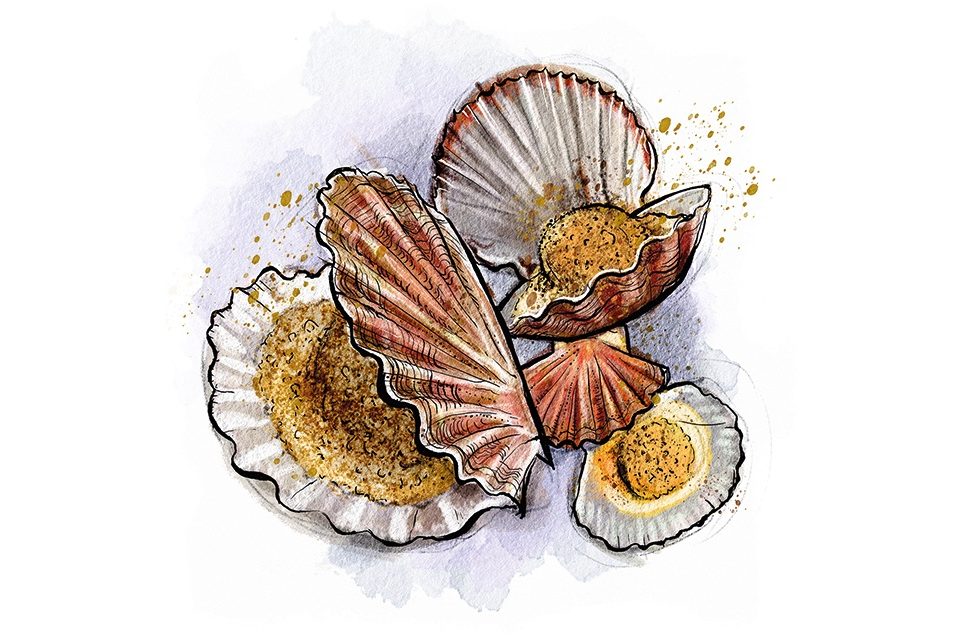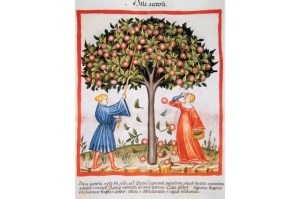There is a gentle irony to the dish coquilles St. Jacques: a decadent, rich preparation of one of our most luxurious seafoods takes its name from a saint who has inspired centuries of pilgrimage, and whose emblem came to symbolize modesty.
The eponymous St. Jacques is St. James the apostle, or James the Great. The scallop shell has long been associated with him, one legend being that St. James once rescued a knight covered in scallops; another that when the remains of the saint were retrieved from a shipwreck, the ship — or perhaps even the body itself — was covered in the shells.
A whole scallop is one of the finest things you can possibly eat
The scallop shell has come to represent the pilgrimage to the cathedral at Santiago de Compostela in Galicia, where the saint’s relics are said to be entombed. Scallop shells appear along the pilgrimage route on the Camino de Santiago, marking the way. In earlier times, the scallop shell would be used as a meagre measure at food kitchens along the path. Pilgrims themselves now wear the scallops as a badge of honor, real ones collected hung from backpacks, or sewn-on scallop patches, identifying the wearer as a Camino walker.
The term “coquille St. Jacques” really refers to the king scallop itself, as opposed to a specific preparation, but it has also come to mean the serving of the scallop on the half- shell, coated with a white sauce and grilled. Given that the name of the dish is more of a genre than a definitive treatment, it’s not surprising that there are many different ways to prepare coquilles St. Jacques.
Unusually for me, flicking through classic cookbooks in pursuit of the perfect grilled scallops is slightly traumatic: many of our finest cookery writers seem to have lost their minds when it comes to the scallop. Julia Child, Elizabeth David, Simon Hopkinson — all excellent food writers, with good sense and a respect for fine ingredients — are willing to commit the same crime of chopping up the scallop meat and scattering it through the sauce. Normally I wouldn’t dream of questioning these giants, but here I can’t help myself. A whole scallop is one of the finest things you can possibly eat: seared in butter until golden and caramelized on the outside, with pale white flesh inside. It is creamy and sweet and briny, meaty and delicate all at once. And it’s beautiful too, plump and round. The thought of chopping them up makes me wince.
We will be searing and serving them whole. In fact, I go a step further, and serve them with their orange-pink roe. This is often removed, but is just as delicious as the scallop, though slightly more savory and with a closer texture, and softer when cooked. It seems a shame to waste something so lovely.
During the heyday of this dish, it became de rigueur to edge it with mashed potato, piped on in froofy little swirls or stars, a Tudor ruff of mash. Felicity Cloake cynically suggests that the potato is a cost-saving move by chefs to pad out the dish, making it appear more generous than it actually is. That may be true, but I also feel that it detracts from the scallop and sauce. This isn’t an individual fish pie. I want to celebrate the scallop, not disguise it.
Here, the scallops rest on a blanket of winey, creamy, shallot-strewn sauce that bubbles up when it is grilled, and are topped with toasted, buttery breadcrumbs. I like finely chopped tarragon through mine; it brings a little color to the dish, and an anisey hum that pairs well with the sweet scallop.
There’s something Christmassy about coquilles St. Jacques — maybe it’s the luxury of it, or the richness of the dish itself. Or perhaps it’s just the showmanship, the flair — serving it on its own half-shell. Whatever the reason, they make a grand start to any festive dinner. I also rather like them as the star of a wintery lunch, served alongside a French stick and lots of soft green lettuce with a sit-up-and-pay-attention mustardy dressing. Scallops unfailingly bring a little glamour to even the grayest of days.
Serves 4
Takes 10 mins
Cooks 10 mins
For the sauce
- 3 1/2 tbsp of butter
- 2 large shallots, peeled and finely chopped
- 1/2 cup white wine
- 1/2 cup heavy cream
For the scallops
- 2 tbsp of butter
- 4 scallops, on the half-shell (roe intact, if you wish)
For the topping
- 1 cup dried breadcrumbs
- 3 1/2 tbsp of butter
- 2 tbsp fresh tarragon, finely chopped
- First, make the sauce. Melt the tablespoons of butter over a low heat and sweat the shallots until they are soft and translucent but haven’t taken on any color. Add the wine and increase the heat, cooking the wine down until it has decreased in volume by about two thirds. Add the heavy cream and allow to bubble for a couple of minutes more; season to taste, and set to one side.
- Over a medium-high heat, melt two tablespoons of butter until foaming, then add the scallops, and the roe too if you wish. Cook for two minutes, then turn the scallops over and cook for another minute, before also removing them from the pan and setting them to one side.
- Add the final three and a half tablespoons of butter to the pan and, once melted, stir through the breadcrumbs and the tarragon.
- Heat the grill to medium-high. Divide the cream between the four scallops shells, and place one scallop with its roe on top of the cream. Scatter the scallops with breadcrumbs, and place under the grill. Watch them like a hawk: once the breadcrumbs are golden, the scallops are ready — this will take about three minutes, but be led by the color. Eat immediately.

























